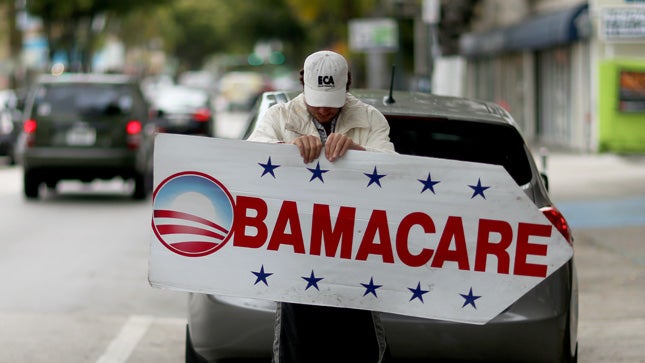Millions of Americans will be able to start signing up for health insurance on Tuesday when ObamaCare’s 10th open enrollment period kicks off, as the Biden administration seeks to sustain record low uninsured numbers.
Only 8 percent of Americans were without health insurance as of August, according to the Department of Health and Human Services.
Premiums are increasing this year, but most consumers will largely be shielded from higher costs because Democrats in Congress passed a three-year extension of enhanced subsidies as part of the Inflation Reduction Act.
According to the Kaiser Family Foundation (KFF), 2023 will mark the first time in several years when benchmark premiums are increasing on average nationwide. Insurers cited rising prices and rebounding utilization as driving the bulk of these premium increases.
Despite the increase, HHS said 4 out of 5 customers will be able to find plans for $10 or less per month after accounting for the subsidies. Enrollees should sign up by Dec. 15 in order to get coverage immediately starting in 2023.
“More and more people are beginning to realize that they can get access to coverage they can afford,” HHS Secretary Xavier Becerra said Monday.
Last year, the $1.9 trillion coronavirus relief law boosted tax credits for low-income ObamaCare shoppers, and for the first time made them available to middle-income Americans as well.
The enhanced subsidies were set to expire at the end of the year, but Democrats were finally able to come to an agreement and include an extension into their social spending package that passed over the summer.
Exchange enrollment reached a record high of 13.8 million people in 2022, with 12.5 million receiving a subsidy.
“Aside from the very first open enrollment … this is probably going to be one of the busiest years thus far,” said Cynthia Cox, director of KFF’s ACA program.
Another potential boost to enrollment for 2023 is the ending of the law’s “family glitch.” The Biden administration earlier this month released a final rule that will give more people access to subsidies.
The rule fixed a loophole in the health law that prevented family members from receiving ObamaCare subsidies if a household member has access to an affordable employer-sponsored health plan.
Financial assistance was available to people with expensive employer plans, but the law did not take into account the increased premiums for adding family members to the plan. The White House estimated about 5 million people were impacted by the policy, but only about 1 million additional people will sign up for subsidies.
Cox said it’s not clear if there’s been enough effort so far to let the public know about such a big change in insurance affordability.
“It’s unclear whether people who could benefit from this policy change will even know about it or not. You know, they might have been told before that they weren’t eligible, and just continue to assume that’s true if they haven’t heard otherwise,” Cox said.
The White House is also investing a record of nearly $99 million into the Navigator program, which funds organizations that work in local communities across the country to provide outreach and education by raising awareness of the exchanges and helping people sign up for coverage.
“Uninsured numbers are really, really low, but there are still millions of people who are eligible for free or low cost coverage who just are not picking it up for one reason or another,” Cox said. “I think there’s still low hanging fruit when it comes to uninsured people who could get free plans.”
